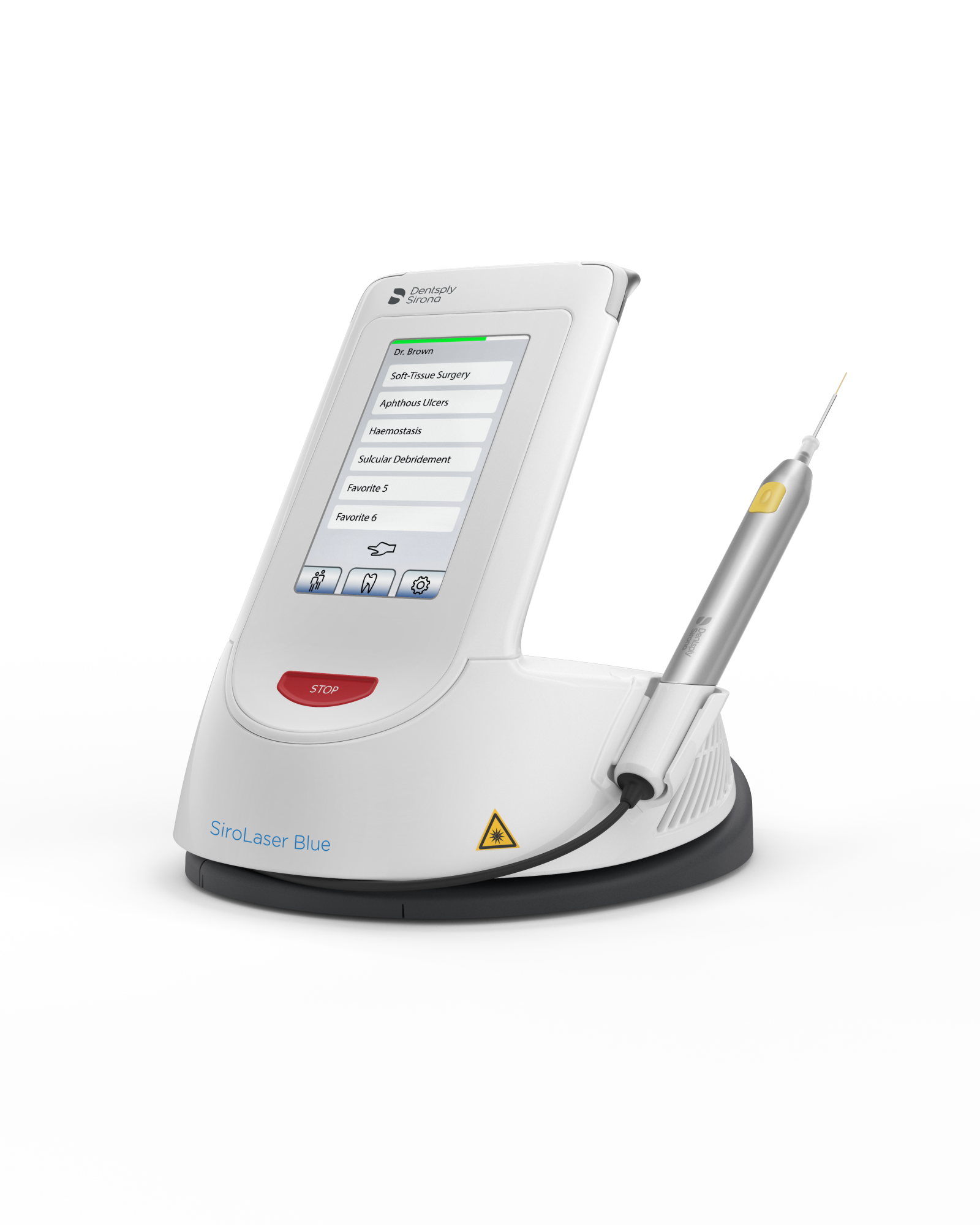Give us a call or provide your contact details below, and a Dentsply Sirona representative will be in touch soon.
ANAESTHETICS SUPPLY NOTICE: Oraqix is limited to one box per week due to shipment delay. For all other anaesthetics orders, please contact customer support on 0800 33 68 77.
DS World
Experience the future of connected dentistry: Each event showcases industry-leading education, cutting-edge advancements, renowned thought-leaders and unrivalled networking opportunities.
2023 Sustainability Report
Our sustainability strategy is fundamental to our mission and is integral to everything we do.

Diode Laser Types
Various types of lasers are used in dentistry. On the one hand there are large and expensive Er:YAG (specialist for hard tissue applications), Nd:YAG (specialist for bacterial reduction) and CO2 lasers (specialist for surgery) which, due to their design, have less flexible mirror arm systems, complex cooling mechanisms and relatively long start-up times. On the other hand there are compact and more cost-effective diode lasers with a wider range of applications, e.g., for minimally invasive surgery, bacterial reduction in periodontology and endodontics as well as photobiomodulation.
That's why we at Dentsply Sirona opted for diode lasers from the word go.
Laser in dentistry and their specific indications
| Diode lasers | Other lasers | |||||
|---|---|---|---|---|---|---|
SiroLaser Blue | SiroLaser Advance Plus | Other diode lasers | Er:YAG laser | Nd:YAG laser | CO2 -Laser | |
| Wavelengths | 445nm+ 660nm + 970nm | 970nm, 940nm, 810nm | 970nm, 940nm, 810nm | 2.940nm | 1.064nm | 9.600-10.600 nm |
| Model type | Compact model | Compact model | Compact model | Large model | Large model | Large model |
| Indications | ||||||
| Surgery (soft tissue) | Suitable | Partially suitable | Partially suitable | Suitable | Unsuitable | Suitable |
| Haemostasis | Suitable | Suitable | Suitable | Not suitable | Suitable | Partially suitable |
| Periodontology | Suitable | Suitable | Suitable | Partially suitable | Suitable | Suitable |
| Endodontics | Suitable | Suitable | Suitable | Partially suitable | Suitable | Not suitable |
| Bacterial infections (herpes, aphthous ulcers) | Suitable | Suitable | Suitable | Partially suitable | Suitable | Suitable |
| Photobiomodulation | Suitable | Suitable* | Suitable* | Not suitable | Not suitable | Not suitable |
| Hard tissue preparation | Not suitable | Not suitable | Not suitable | Suitable | Not suitable | Suitable** |
Depending on the laser wavelength and the tissue composition, various physical interactions are induced:

Furthermore, with diode lasers one can differentiate between hard and soft lasers.
- Hard lasers trigger a direct reaction with the tissue through absorption. They are used in surgery for bacterial reduction.
- Soft lasers do not trigger a direct reaction with the tissue, instead acting at the cellular level deep inside tissues. They are used for photobiomodulation (e.g. pain therapy and photodynamic therapy).
Contact us
Find out more about instruments from Dentsply Sirona by requesting product information on straight and contra-angle handpieces, turbines, lasers and more.
* only with corresponding functionality
** 1 laser model available on the market





